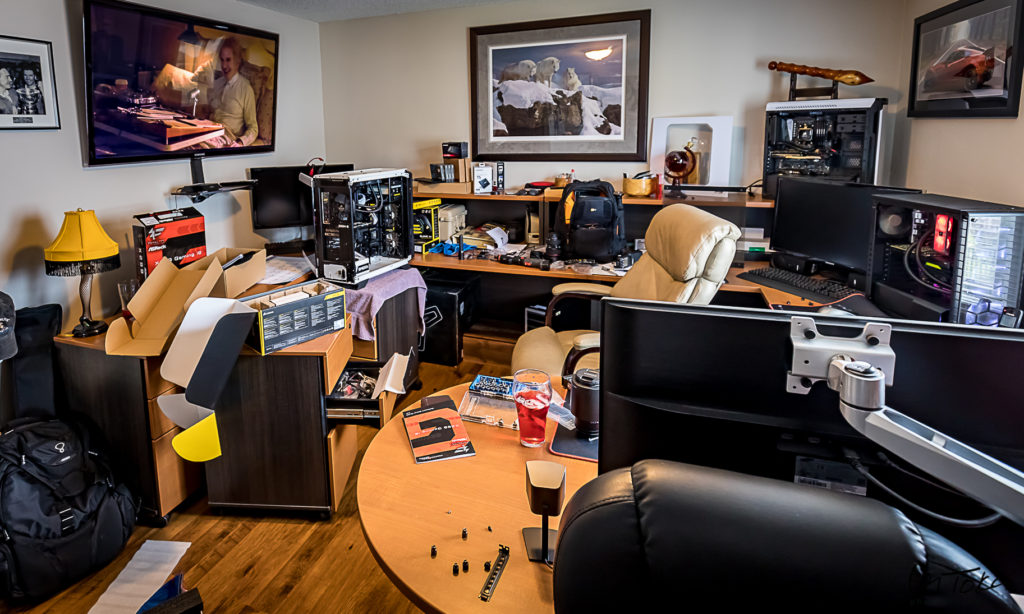Catch lines are everything. If you are reading this, that title has done its job and it’s now in my hands to keep you here. My name is Les Tokar and I am an SSD Reviewer. I have worked in flash media since it rolled out to the public ten years ago and have written extensively on SSDs to the tune of millions of readers. In this Optimization Guide, we hope to explain everything you need to know on how to build and optimize for the absolutely fastest and most efficient SSD contained PC possible…and how to avoid the free falls that so many fall into along the way.
This report will be chronological, explaining what needs to be considered in your build including motherboard, SSD selection and installation, UEFI/BIOS settings, OS installation, and finally, SSD optimizations that should be considered. This Guide will be very easily understood, will explain very clearly our thoughts on the inherent gains and risks associated with each tip, will spell out how to complete each step, and where possible, will contain true performance results to demonstrate the gains…or losses. Have we got you hooked yet?
 FIND A TRUSTWORTHY SOURCE OF INFORMATION
FIND A TRUSTWORTHY SOURCE OF INFORMATION
There just has to be a ton of SSD optimization guides available on the internet today and they can make your head spin. One writer will tell you to shut down page file while the other will tell you not to. One will tell you to never shut down system protection while another will tell you its necessary for top performance. One will tell you that setting your power options doesn’t matter where another will tell you that the best speeds come from ‘High Performance’ mode. One will state that you should do a fresh installation where another says migrate. And then there is that guy that tells you that you don’t have to do anything whatsoever…
‘That guy’ is why we are here. ‘That guy’, and so many e-mails since the last SSD Optimization Guide we published a few years back is the reason I have decided to throw away my plans for a few weeks and compile The Reviewers Guide to SSD Optimization 2018. We need to be very clear though. SSD optimization to most will bring no more than the satisfaction of knowing that your SSD is installed properly and running the best it can. Most will never see the benefits of their work as that blazing fast SSD becomes the norm until you once again find yourself chained to a hard drive based PC of course.
We think it is just as important to tackle the ins and outs of what can occur if you decide not to follow a tip, and to try to help you get out of trouble if the unexpected occurs. So what are the main problems with switching to an SSD? Without a doubt, migration has to be the biggest complaint, followed by lack of performance from an SSD with PC freezing after sleep/hibernation as the third. There needs to be a resource that can be trusted, one that follows what the SSD reviewers do in their testing and one that can be understood and followed by even the newest SSD enthusiast. This is it.
So…. we can say that much of what we are going to discuss in this report is really a pattern of optimizations you might see with the best SSD reviewers worldwide. They all use them to some degree. With that in mind, I will leave this document as an open page and will add additional optimizations as suggested if their merit is obvious and should be shared. Feel free to jump in and comment, regardless of whether we may agree or not. Discussion is the key..
THE NECESSARY CAVEAT
Before we get started… I have to get this in so there is absolutely no confusion what we are doing here. None of what we are reporting on today is necessary for your PC build or SSD installation. SSDs are an amazing technology and are a very simple switch from an HDD. We are not responsible for any mishaps through misread instructions or anything else that may occur in following this guide. Everything written here is well known, common in the SSD space and can be found through a quick internet search, well almost everything anyway. SSD migration can be quick and easy and you will be amazed moving to an SSD from a hard drive.
Having said that, optimizations made through the UEFI/BIOS aren’t recommended for the typical home user as these result in your CPU and memory working at its maximum workload, often without cooling and thermal safeguards. These benchmarks, for the most part, provide for the highest possible SSD performance, although they would have little to no noticeable difference on typical use. In discussion a quote was made that, “These benchmarks are actually too efficient, to the point where it negatively impacts the results when normal CPU settings are used.”
That is where we come in. This report will also explain the potential downfalls in doing something ‘the easy way’, something that never worked out or caused an ill effect, as well as demonstrate the fix for you. So…. if you decide against a fresh install and the system doesn’t start or works very slowly, we are here for that. If you wonder why your PC is frozen after a good nights sleep. We can reassure you as to why. If you wonder why your SSD does not perform at listed specs after your install, we have that answer.
Let’s get started with a brief description of our test equipment…
 The SSD Review The Worlds Dedicated SSD Education and Review Resource |
The SSD Review The Worlds Dedicated SSD Education and Review Resource | 
